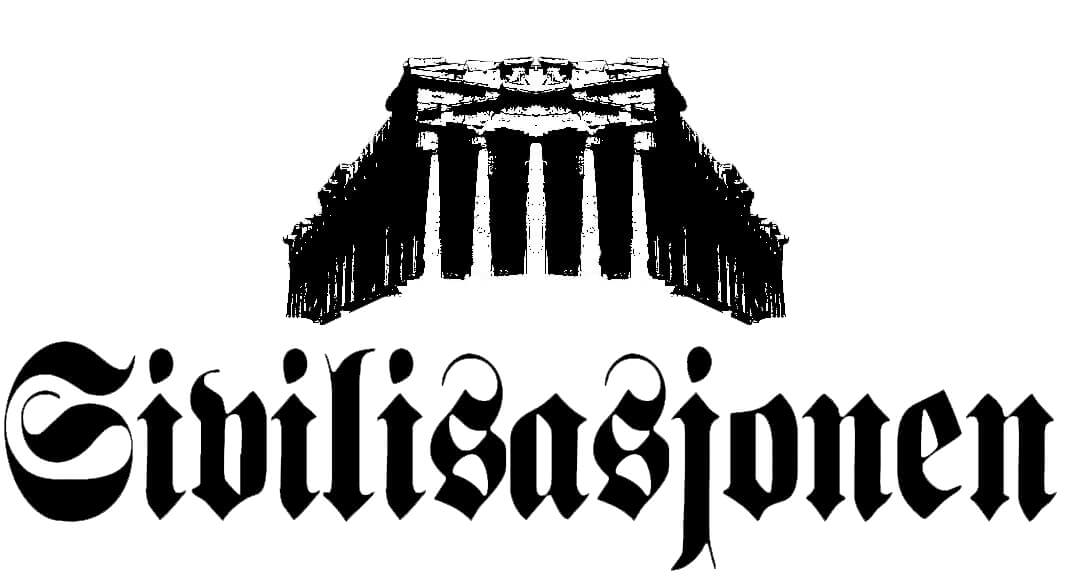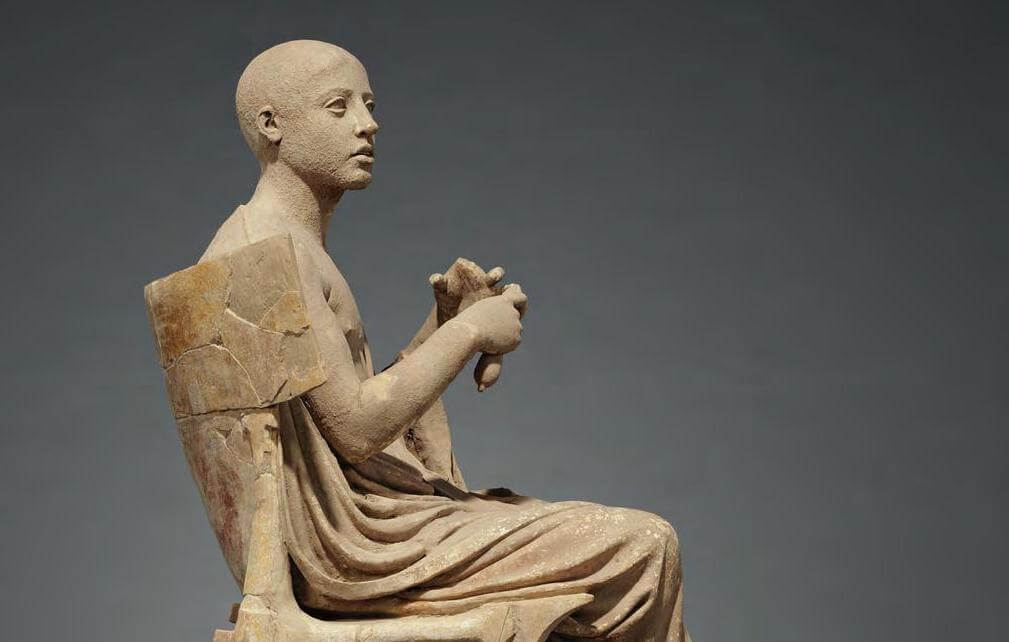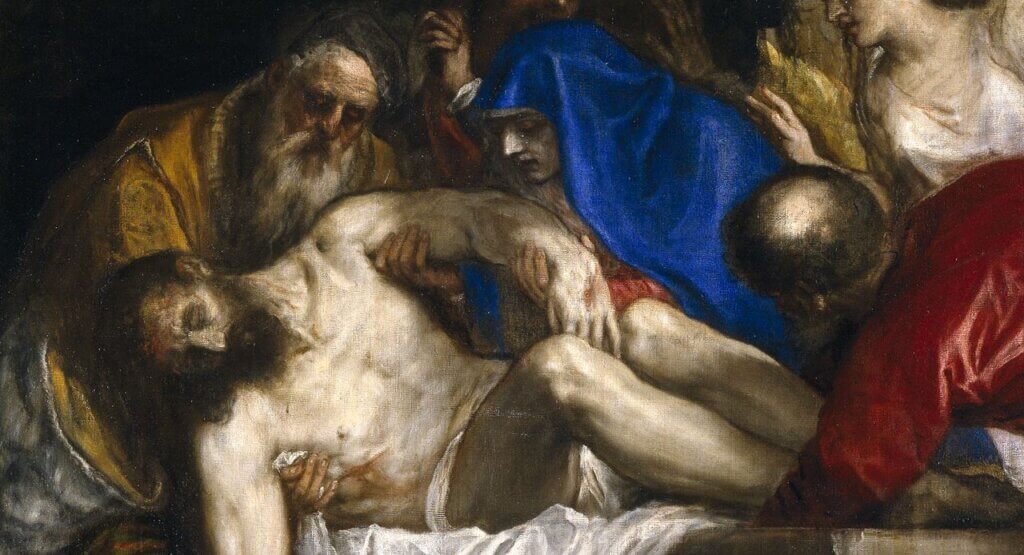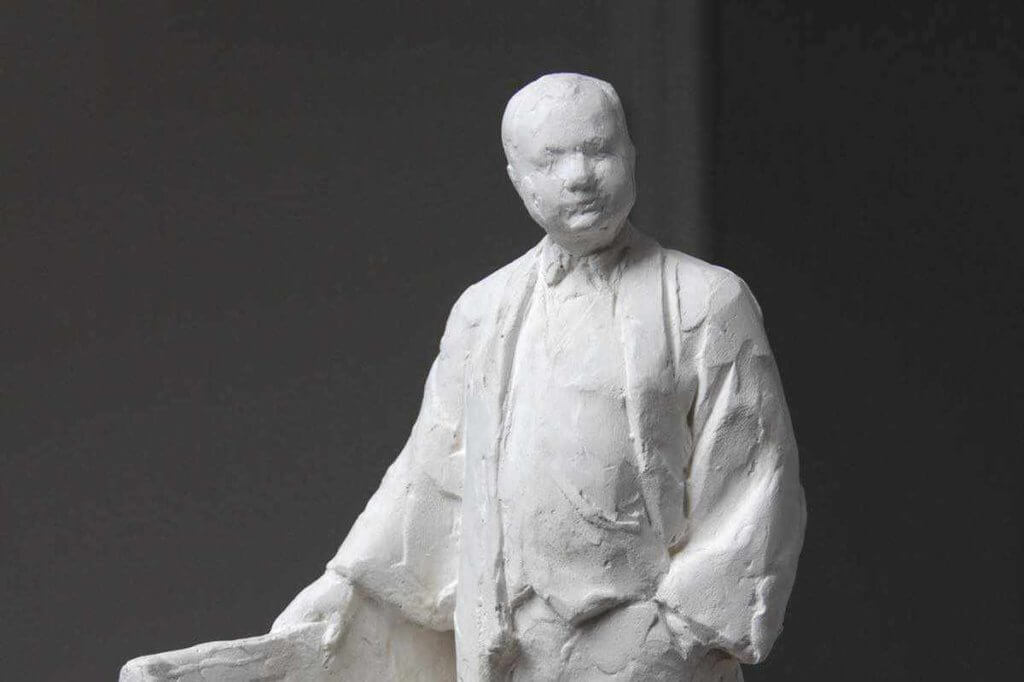The search for Atlantis is the predominant symbol of man’s need to connect with a distant past that nature has erased from our consciousness.
If Plato’s account of the continent that sank in the ocean approximately 12 000 years ago should prove to be more than a myth, then the perception of human history as gradualistic and linear will fall apart. Perhaps the discovery of Atlantis would open the doors to a different perspective of life on earth, where reverence of the past and the ability to recognize the importance of ancient knowledge, are resurrected once more.
Many are searching in vain for reminiscences of the Atlanteans in Southern Spain, the Mediterranean, and the Atlantic ocean. But could it be that traces of the lost civilization are right in front of our eyes?
Once in a while you get confronted with ideas of that kind. Weird loners turn undisputed facts upside down and trigger the guardians of the holy truth.
Heinrich Schliemann did exactly that. Mocked and ridiculed by academics in the 1870s, he traveled to Turkey to find the ancient city of Troy based on a poem by Homer.
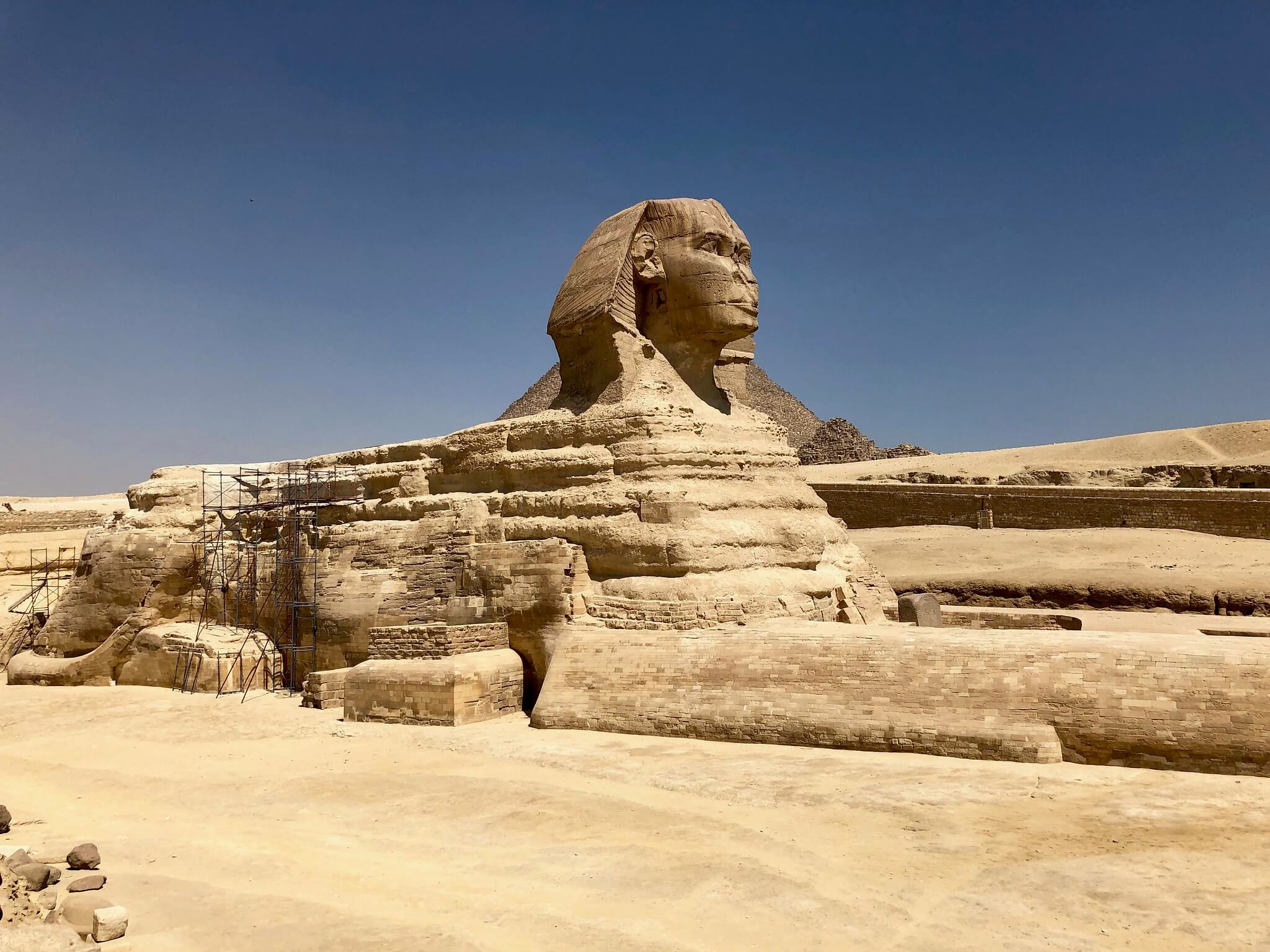
John Anthony West’s discovery of erosion on the Giza Sphinx is another example. His finding suggests that the monument is many thousand years older and dates to pre-historic or Atlantean times.
And then there is Charles Hapgood’s mind-boggling conclusion that the topography on portolan charts from the late Middle Ages indicate that the maps are based on ancient source maps that depicted the world before the ice age 12,500 years ago.
Schliemann silenced his critics with his discovery. The hypotheses of West and Hapgood, however, continue to be ridiculed by “the experts.” Hapgood once said that he would rather discuss his theories with amateurs, because they are open to new ideas — in opposition to scholars, who most often act as gatekeepers of accepted beliefs.
“Experts” and their arrogance should be reminded of what science is all about: making observations, asking questions, experimenting, and developing hypotheses — followed by open-minded discussion.
As the saying goes: “The mark of an intelligent man is that he can entertain an idea without committing to it.”
In the spirit of Schliemann, Wes,t and Haphgood, I intend to challenge an accepted view of an ancient artifact.
You, the reader, will have to make up your own mind and decide whether my hypothesis is worthy of further investigation or not.

The Sculpture Group of the Seated Poet and Two Sirens
The J. Paul Getty Museum in Los Angeles has in their collection three terracotta figures in almost full size. Respectively, the statues depict a seated poet (Orpheus?) and two sirens. The work dates to 350-300 BC, and is attributed to the production of terracotta figures in the Greek colony of Taranto, Italy.
This is what the museum tells us about the sculpture group, but no one actually knows for certain where it comes from, when it was made, or what it depicts.
It was my father, Odd Nerdrum, who made me aware of these statues. He told me that he had seen them many years ago, and was puzzled by their irregular features. He could not pinpoint them to a certain historical period. Did they come from an unknown culture, were they Iberian… or something else?

Considered to be a fake
The Getty museum’s investigative notes about the sculpture group are of particular interest. In a catalogue about their collection of terracotta artifacts, they write:
“This group constitutes one of the most unusual compositions in the art of Magna Graecia. In the past, because of its uniqueness, the anomaly of its iconography, and its purchase on the antiquities market, many scholars believed it to be a forgery. Tests performed on the clay and polychromy, however, have attested to its authenticity, though before the Getty’s acquisition all the figures in the group had been subjected to a substantial and in many respects inappropriate process of restoration and cleaning that altered the surface and original polychromy. Since the group had been acquired through the antiquities market, there is no information about its place of discovery. It was only through an exegetic and stylistic analysis that hypotheses could be formulated as to its intended placement, significance, function, and findspot.”
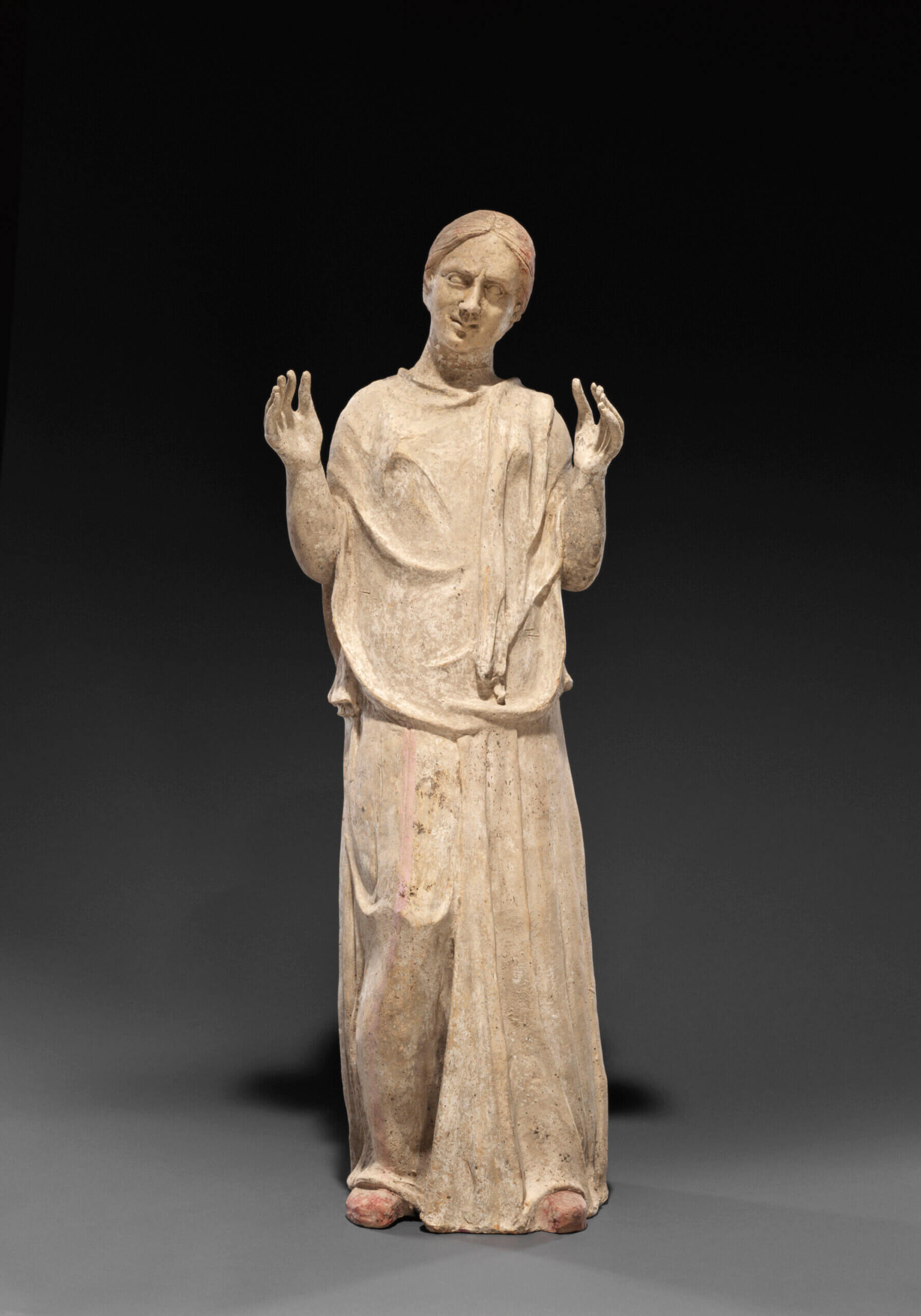
To my limited knowledge, this sculpture group is rather quite different from everything else that has been produced in Terracotta from Magna Graecia — and the Mediterranean for that matter. Seated Poet and Two Sirens is executed with more precision, more sensuality, and the proportions are on a higher level compared to that of other Terracotta statues. Another anomaly can be found in their facial structure which includes features such as low cheekbones — and the head is oval-shaped as opposed to the diamond-shape in conventional Greek figures. The draperies, hairstyle, and postures are also stylistically different.
There has been little doubt as to what the two female statues depict, but if they really are sirens, then why are they so different from conventional Greek depictions of the mythological creature? Usually, sirens are depicted as dwarfs with large heads and short legs. In Seated Poet and Two Sirens, the legs are elongated and the upper body has regular human proportions.
However, if we take into consideration that a huge amount of Greek sculpture was destroyed in the Middle Ages by christian zealots, important material for this comparison may now be lost. But this is pure speculation.
So where did the sculpture group come from and who made it? Was the sculptor simply a Greek craftsman who operated in unusual ways? That might be, but there is another, rather wild explanation.
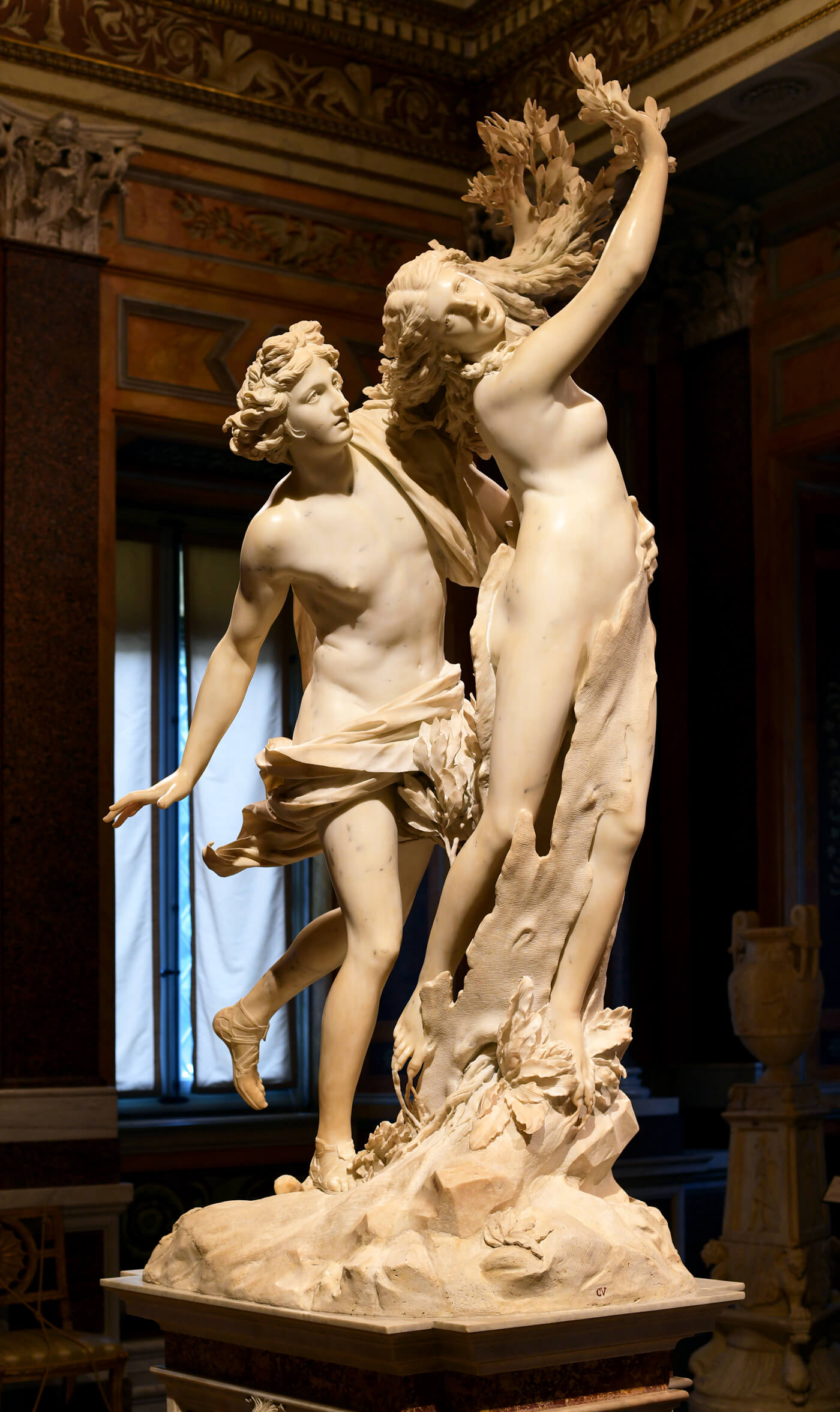
The Renaissance argument
It seems quite far-fetched, but is it possible that Seated Poet and Two Sirens is older than the Getty says it is — that the Greek craftsmen used this sculpture group as a model for the development of what we today know as Ancient Greek sculpture?
I call this the Renaissance-argument, keeping in mind that a handful of Greek statues entirely defined the art of sculpture in 16th century Italy. The Renaissance (which means rebirth) would not have been possible without the Greek influence, but even more importantly: without the historical knowledge of that fact, a masterpiece by Bernini would easily be mistaken as an original Greek sculpture from Antiquity.
What inspired the Classical Greeks?
It has never been properly explained why the Greeks transformed at such a fast pace from the archaic to the classical way of representing the human being in sculpture. It has conventionally been argued that the new classical architecture at the time necessarily had to be accompanied by classical sculptures. Some also point to the new trade relations in the Mediterranean as a factor, but these explanations are not very insightful.
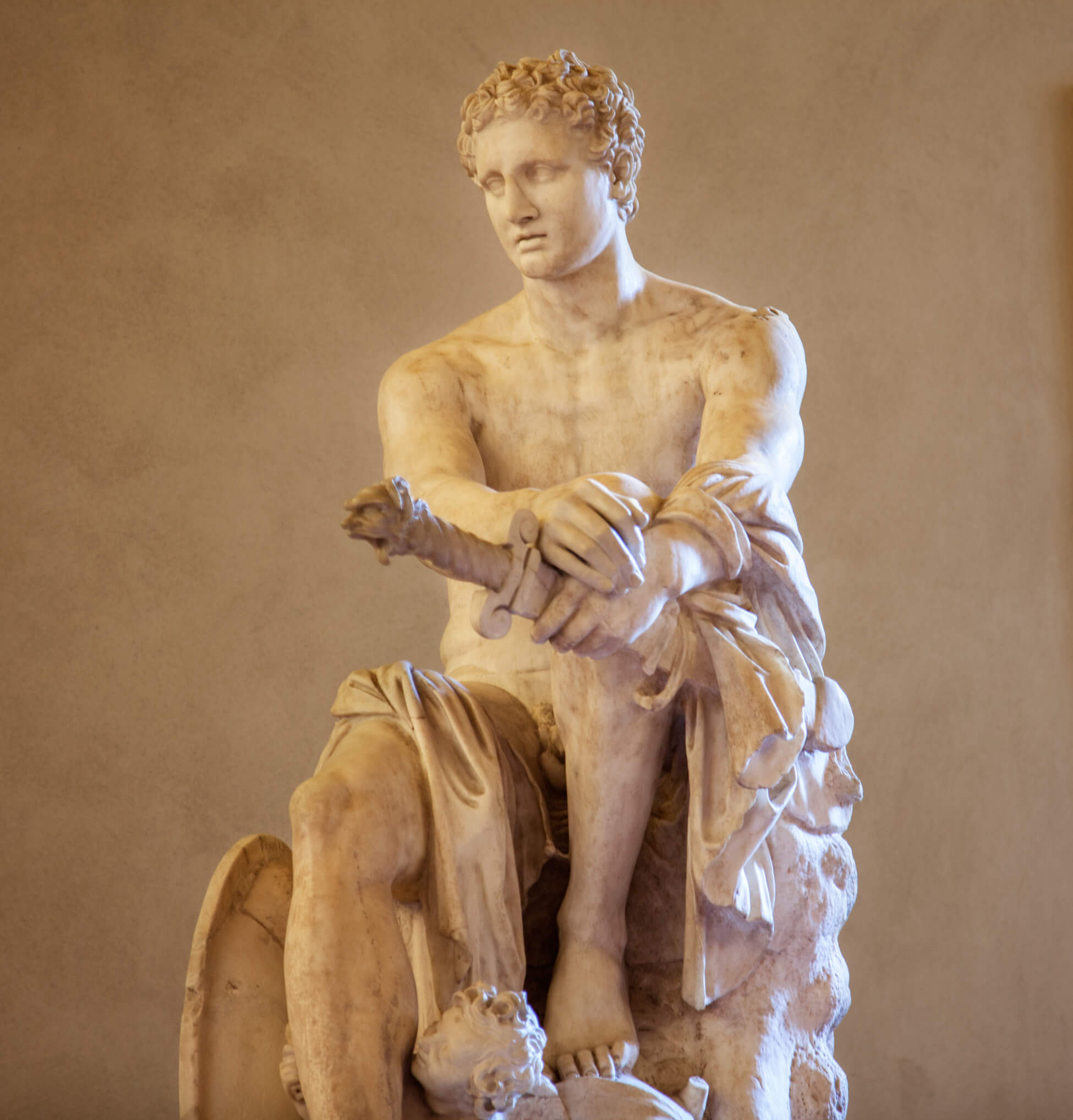
Could it be that the Greeks at some point in time came across some ancient statues from a lost civilization and built upon the artifacts that they discovered? It is conceivable that the old statues were restored and thus received a “Greek touch”. This could explain why Seated Poet and Two Sirens has many features that are similar to Hellenistic sculpture, all the while being so stylistically different.
The Renaissance-argument could support this hypothesis. One of several ancient statues that were restored by Michelangelo, was the Roman copy of Skopas’ Ares. At the surface level, it might not seem too different, but while the sculpture is unmistakably Greek, the decoration on the sword handle is unmistakably Italian.
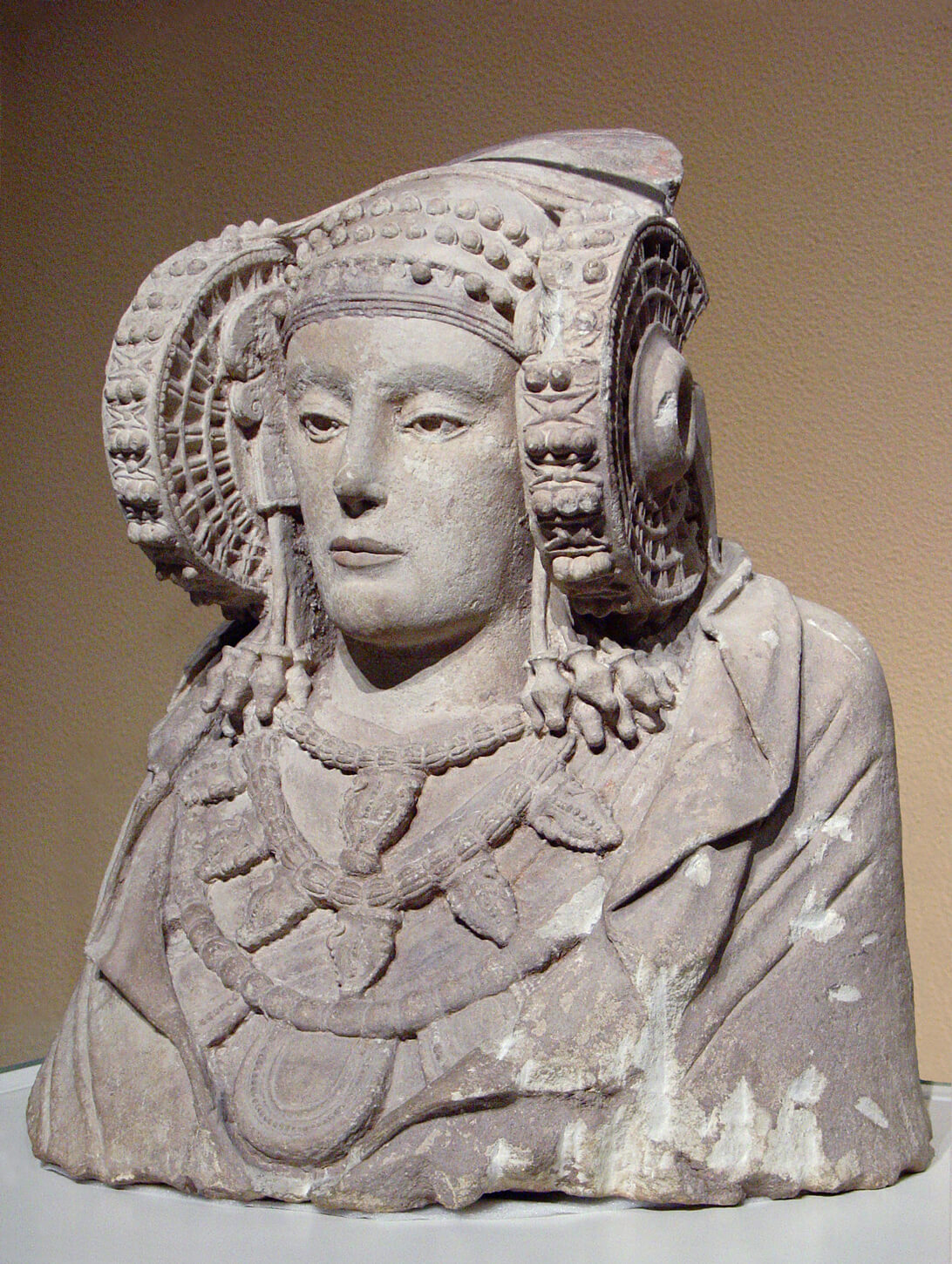
Important information may be lost
Is there any hard evidence to support the theory that the Greeks were inspired by an ancient culture — akin to the Italians in the Renaissance? To my knowledge there is not, but taking into consideration that approximately ninety percent of all the written material from Ancient Greece was burned and destroyed in late Antiquity, vital information on a subject like this may have been erased from history.
The fascinating Antikythera-mechanism is a prime example of an object that has Greek origin, but is not mentioned a single time in Greek literature.
I think it was Graham Hancock who once said that traces of a pre-historic, advanced civilization is present amongst us. The Giza Sphinx looks Egyptian, but as in the case of Skopas’ Ares and all other human-made objects that have been passed on to other cultures, it has been colored by the times.
Is Seated Poet and Two Sirens of Iberian origin, as Odd Nerdrum has suggested, is it much older, or is it simply a rare work from Greek Antiquity?
